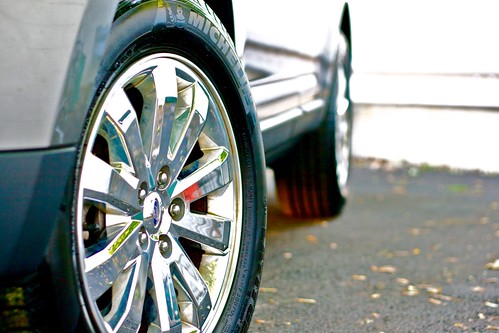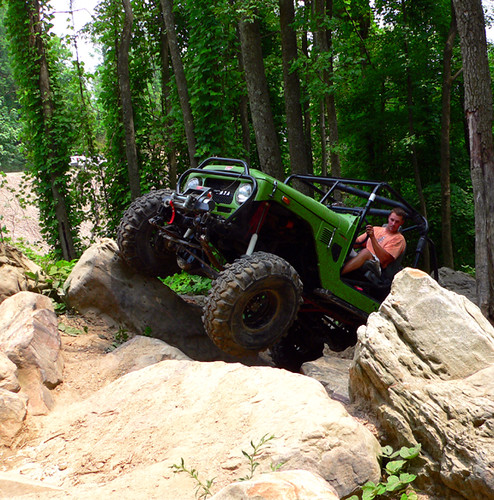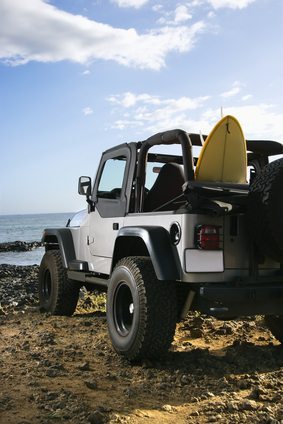Sooner or later, many truck and SUV owners think about “plus-sizing” the tires on their vehicle—going with a set of taller, wider tires. Whether you take your vehicle through rugged off-road trails or stick to pavement, you should know a few things before you make a final decision.
Choosing the Best Tire Upgrades
Looking cool. There’s nothing wrong with a tire upgrade that makes your truck or SUV look great, even if it doesn’t see a speck of dirt. However, choose a tire that not only looks good, but also maintains safe handling and ride characteristics on the open road. The majority of stock light truck and SUV axles can handle tire sizes up to 37 inches tall without much issue, but you might need beefier axle shafts and higher numerical differential gears to maintain reliability and performance.

Photo by josh-ferris via Flickr
Towing stuff. A 40-inch-tall tire might make your truck look awesome, but if you’re into towing your boat to the docks with the occasional jaunt down a muddy road, it might be a waste. Shorter tires like the BF Goodrich Rugged Terrain T/A offer a good compromise between off-road prowess and civilized highway handling.

Photo by DiamondBack Truck Covers via Flickr
Four wheeling. If you’re dead serious about four wheeling, make sure your tire size squares up to your vehicle’s wheelbase. A tire range of 31 to 37 inches works for short SUVs with a wheelbase less than 96 inches, while SUVs with a wheelbase around 108 inches can use tires with 33 to 38 inches of height.

Photo by May and her camera via Flickr
What to Expect From a Tire Upgrade
Depending on the type of tire you go with, you can expect improved off-road performance. This largely depends on tread depth and pattern; many of the more aggressive off-road tires offer greater grip, due to deeper tread and unique tread patterns. Bigger tires also have a positive aesthetic effect on most trucks and SUVs, especially when paired with popular on road and off-road accessories.
On the other hand, bigger tires can rob your truck or SUV of its EPA-estimated fuel economy. Taller, wider off-road tires (especially mudders with aggressive tread patterns) create greater rolling resistance, with the resultant forces dragging your fuel economy down. Larger tires can also make turning your truck or SUV more difficult, although this depends more on the tire width and the amount of wheel-well clearance your vehicle has.
Taller tires can also throw off your vehicle’s speedometer and odometer readings, as both are calibrated with stock sizes in mind. With bigger tires, both will read slower than the vehicle’s actual mileage and speed. Four Wheeler offers a formula for determining the degree of uncorrected speedometer error: Simply divide the new tire size (in inches) by the old tire size and multiply by the indicated speed (in mph) to get the actual speed.
About The Author
Kevin Carey – Kevin is an auto blogger and father of three from New York.

Leave a Reply
You must be logged in to post a comment.